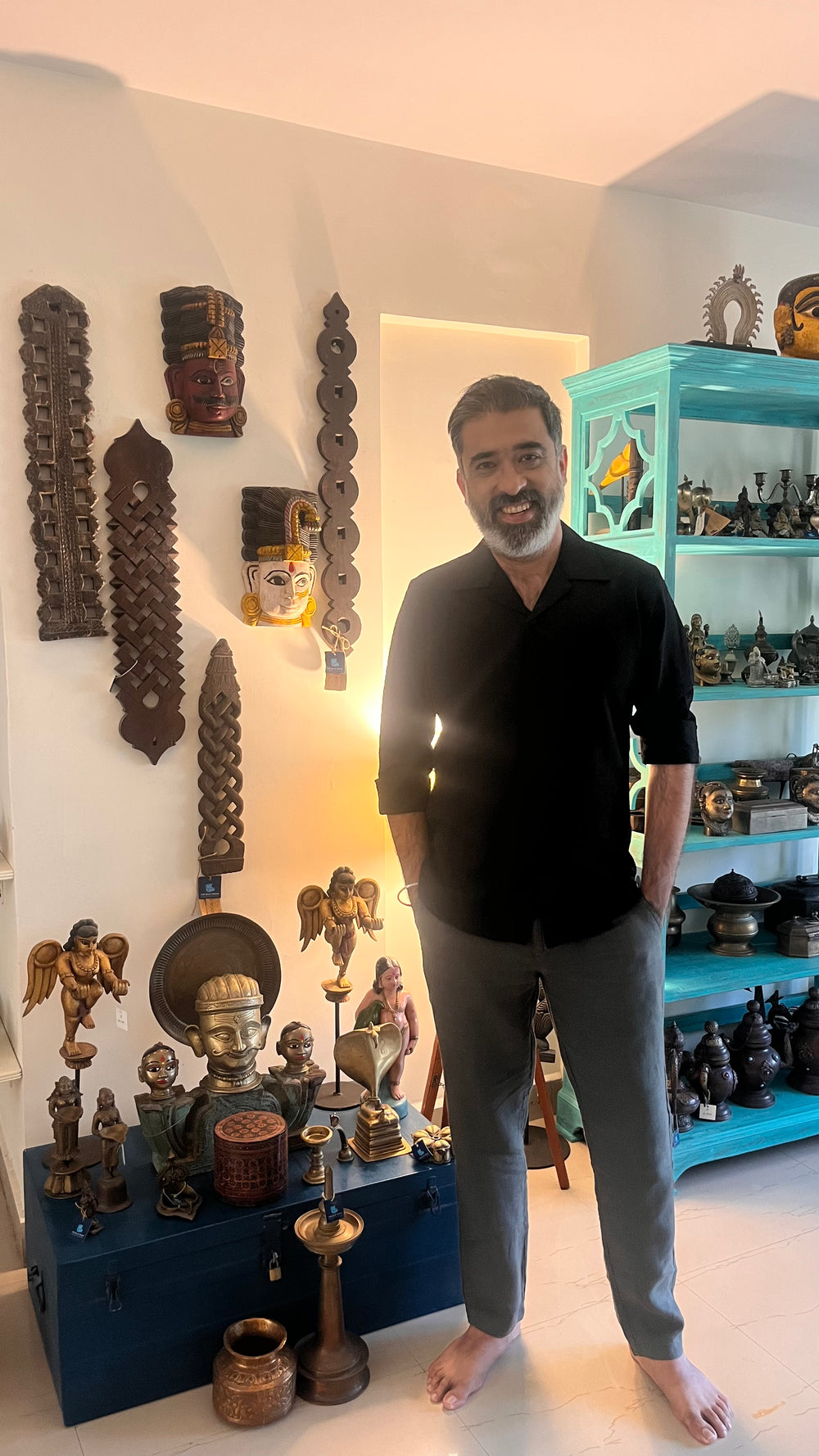Vintage Brass Veerabhadra Plaque
This rare vintage Virabhadra plaque is an exemplary representation of the high quality of relief brass-casting skill of our ancestors. Traditional casting involves a lot of human skill and dexterity which shows up in this marvellous piece. Virabhadra is shown with three eyes and four hands in which he holds a bow, an arrow, a sword and a shield. Daksha, whose human head was replaced with a Ram’s head, stands on Virabhadra’s right, his hands in anjali mudra. The figure to Virabhadra’s left probably is, Virabhadra’s consort. Her hands are also in anjali mudra. The sun and crescent moon adorn the upper portions of the plaque. Virabhadra’s clothing and ornaments have been cast with vivid detail. He has multiple chest ornaments, earrings and a crown. A kirtimukha has been cast onto the top that juts from the plaque adorning the lord's crown. This piece is in great condition and makes and exceptional collectible.
Virabhadra, an incarnation of Shiva, was created after Shiva's wife, Sati, was not invited to a great sacrifice given by her father Daksha. Sati, being greatly humiliated, went to the banquet and threw herself on the sacrificial fire. When Shiva heard of his wife's death, he tore a hair from his head and threw it to the ground. Virabhadra, a great hero-warrior, arose from this hair. He cut off Daksha's head in his rage and hurled it into the sacrificial fire. After the other gods calmed Shiva down, Daksha's head was replaced by that of a goat or in this case, a ram. Daksha later became a devotee of Shiva.
History of use of statues of gods in Indian religious culture: The history of statues in Indian religious culture spans over two millennia, showcasing diverse styles. The Mauryan era saw the emergence of stone-carved statues, marked by a certain austerity and simplicity. In subsequent centuries, during the Gupta period, sculptors honed their skills, producing lifelike, highly detailed statues. The Gupta style emphasized grace, idealized proportions, and exquisite facial expressions, exemplified by the iconic standing Buddha statues of Sarnath. As time progressed, regional variations emerged. In the South, the Chola dynasty excelled in bronze casting, creating dynamic, sensuous depictions of deities. In the North, the Rajput and Pala dynasties contributed distinctive styles, characterized by intricate ornamentation and unique iconographic features. The Mughal era brought about a synthesis of Persian and Indian artistic traditions, exemplified by the elegant marble reliefs and intricately carved jalis (latticed screens) in Mughal architecture.
Dimensions: 11 cm (Length), 19 cm (Height)
Weight: 0.5 kg
Colour: Antique Golden
Wipe the piece with a soft, dry cloth. Do not expose it to direct sunlight, dampness, heat or cold.
Shipping is free in India upto 5 kgs. Please refer to the “Payment, Shipping and Returns” before you place your order.













